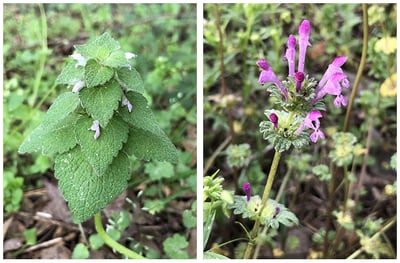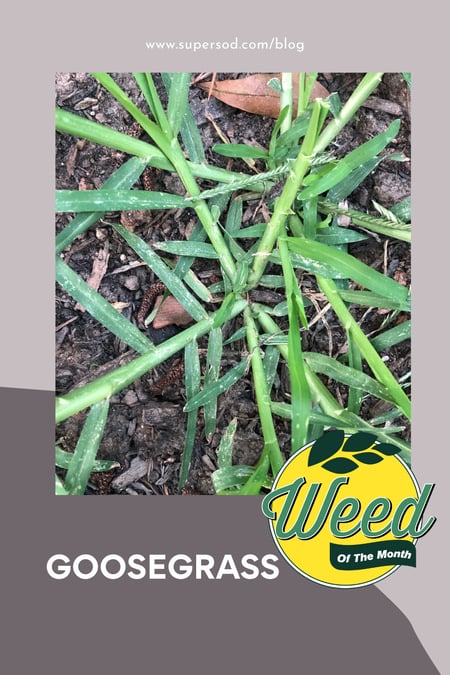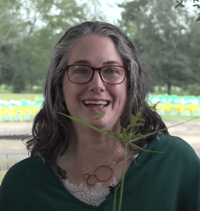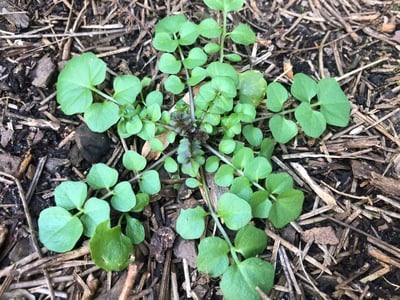

This installment of the featured weed is Eleusine indica aka goosegrass or silver crabgrass. We'll cover how to identify and control it.
Goosegrass does look a lot like crabgrass and dallisgrass, but once you start studying them, you'll instantly be able to tell the difference. Several key ID factors for me are the flat stems, lack of runners, love of compacted soils, and difficulty to pull up by hand. Put on your reading glasses to learn to spot this weed at a glance.
Viewing Tip: Increase the volume and the playback speed according to your preferences. Volume control is the speaker icon on the lower left; playback speed is the gear button on the lower right.
Goosegrass ID Features:
Because Eleusine indica is possibly the only Eleusine species found in the Southeast, there are not many goosegrasses to learn, like there are crabgrasses. To control goosegrass, we first need to learn how to identify it.
- Family: Goosegrass is another annual grass in the Poaceae family, commonly called the grass family.
- Habit: It grows from a central crown with branches radiating out like the spokes in a wagon wheel. (I'm borrowing this "wagon wheel" description from Paige Diamond in our Charlotte/Pineville store, since it's a good descriptions and helps solidify this characteristic.) You can see a good example of the wagon wheel formation in the picture above.
- Flowers: There are three characteristics that distinguish it from crabgrass:
- Racemes #1: Grassy, green-colored flower and seed heads with 5 to 7 (up to 13) racemes that are thicker than crabgrass racemes.
- Racemes #2: Grass racemes are sometimes called fingers. I found this description on the UGA website that described to a T the interesting arrangement I was seeing, "Frequently a single finger below the terminal cluster of fingers." This single raceme below the main cluster is a good ID characteristic to separate it from crabgrass. This ID feature is not consistent - many goosegrass flowers don't have this single finger below the cluster - so don't let it become your only ID feature. However, it is a good one when it's present even if there may only be one like it on the entire plant.
- Seeds: Seeds are large so that the racemes look fuzzier and chunkier; crabgrass seeds are smaller and the racemes are slender and don't look fuzzy. I have read that goosegrass racemes look like a zipper because of the larger seeds.
- Leaves: Large blades that give it a coarse texture and are larger than any lawn grass. Just like crabgrass! This is one reason why the two are easily confused.
- Stems: The stems are green, pale green, or whitish (hence the name silver crabgrass). Goosegrass stems do not root at the nodes and there are no runners; there are both rooting nodes and runners on crabgrass. Another distinctive characteristic is how flat the stems are. If you roll a stem between your thumb and index finger, you'll find that it doesn't roll very well because it's so flat. If you hold crabgrass the same way, it will roll because the stem is round. Once you understand these differences by touch, you'll be able to spot the flat stems by sight.
Rolling a goosegrass stem between thumb and index finger to see if it's flat. The flat stem is a key ID feature.

Goosegrass flowers - showing the single finger below the terminal cluster.
Note the pale green stems on goosegrass and the round, reddish ones on crabgrass. The stems on both have a wagon wheel arrangements, but they are different wagon wheels.
This annual grass loves full sun and compacted soils. In fact, if you're trying to identify it and it's in compacted soil, then it's probably goosegrass rather than crabgrass.
Goosegrass has naturalized in the Southeast from its subtropical home in Asia and Africa.
Learn more about goosegrass from these websites:
- NC State Extension features goosegrass
- UGA has goosegrass listed in its database
Eat it or Treat it - How to Control Goosegrass
Goosegrass is in the Poaceae family and as such it's edible. I've heard it called "famine food" due to it taking a lot of work to harvest, so it's really only eaten in dire times.
Because goosegrass is one of the hardest weeds to get rid of once it's growing in your lawn, prevention is the best form of control. It is an annual so there is hope of breaking the lifecycle and minimizing infestations.
Goosegrass Prevention:
- #1 Best tip for Goosegrass Control: In February spread pre-emergent herbicide to prevent germination of summer weeds, such as goosegrass. Goosegrass germinates early in winter so if you have a goosegrass infestation, we recommend you don't miss applying pre-emergent in early February. If you subscribe to our email we'll send you an email reminder or sign up for Lawn Coach and we'll send the pre-emergent to you at the right time.
- Prevent goosegrass in beds with thick layers of mulch and by cultivating a thick, healthy lawn.
- Since goosegrass prefers and thrives in compacted soils, add organic matter to improve those compacted areas.
Manual Removal of Goosegrass:
- Hand pull: I find goosegrass difficult to pull up by hand or hoe - probably because it chooses to grow in compacted soils. I have to get a shovel and dig it up. The best control for me is mowing and the pre-emergent step listed above.
- Mow to keep plants from going to seed.
- Time/Patience: Goosegrass is an annual that will be killed by frost in autumn. If you keep it mowed so it doesn't set seed, you'll have less of an infestation next year.
Chemical Control of Goosegrass:
- Tenacity is available to homeowners for goosegrass control in Tall Fescue and Centipede lawns. Centipede is sensitive to chemicals so test it on a section of your Centipede lawn before applying it to the entire lawn. For all lawns carefully follow the directions on the label and use a surfactant.
- For Bermuda and Zoysia lawns, it's harder for a homeowner to chemically treat on your own. Of course, you can spray a non-selective herbicide, but that will kill the lawn too (warm season lawns will send runner to fill in those sprayed-out spots, but it will take time for that to happen). There are selective herbicides out there for commercial applicators to eradicate goosegrass, so you may have to hire a licensed pro.
Questions? Leave a comment below.
If you're a weed aficionado like me, check back here for future weed profiles. Until then, happy weeding!
All pictures by Hillary Thompson. Special thanks to Paige Diamond and Greg Nichols for contributing goosegrass ID and treatment tips.







